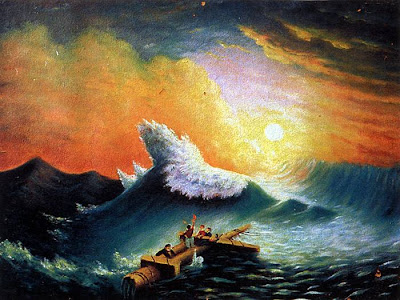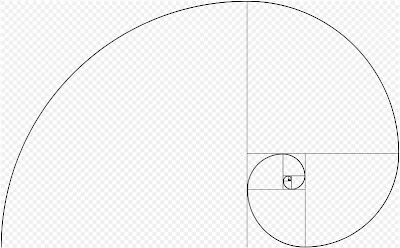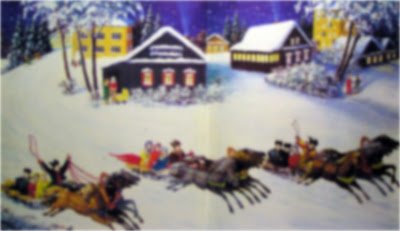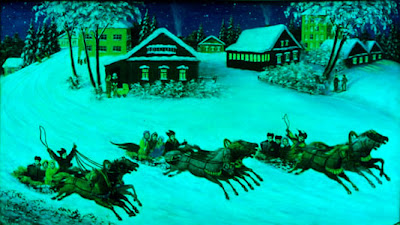
* Go to Recent Updates, see my personal theory on the painting
Visit the latest post, showing manipulations of the image
The story so far, a blog called Very Russian Tochka Net had a post about a mysterious painting. A person posted a scan of a picture from a magazine and said the following,
- This was painted by a person with a rare and severe mental disorder. He was constantly seeing his own fantasies all around him. He also had a certain phobia (undisclosed).
- His (the poster’s) psychiatry professor showed this painting in a lecture, and said there was one tell-tale sign in it that showed the painter’s insanity.
- The professor didn’t say what that sign was, leaving the students to do the guesswork. The only clues he gave was, “don’t look for small details, look at the whole; if you figure out what the phobia was, you’ve got the answer; ask yourself what could have preceded this scene; think of what the place would look like with all the objects removed“.
- The professor said that during the 15 years of his teaching, only one student had figured it out.
Read the entire blog entry,
Could this be the new Da Vinci CodeThey then continued with the following posts,
The mystery painting: a sudden twistThe mystery painting: almost there…The mystery painting: VeryRussian.net almost slashdotted!A video tribute to The PaintingThe Final Meltdown, probably
The painting above is the actual painting shown at the
museum.ru website. The following photo of the painting is the magazine scan. As stated in the original post, the center distortion in the picture if from the folding of the magazine and has nothing to do with the hidden meaning/message/context in the photo.

According to museum.ru, psychopathological expression is where they allow people already inflicted with mental illness to create art. The idea is to allow the doctors to view a window into the patients mind to see how they perceive reality. Below is the picture from the postcard that A. Kuplin used to create his painting.

The following painting is also from the museum.ru website. It was recreated from a painting by I. K. Aivazovsky. This painting was also by A. Kuplin.

Here is the original painting by Aivazovsky,

Just my observation, but it almost looks like a head of fire looking down on the boat in the recreated painting,
 The list of clues, so far
The list of clues, so far- The person has a rare and severe mental disorder.
- He had an certain undisclosed phobia.
- One tell-tale sign in the painting shows the painter’s insanity.
- Don’t look for small details, look at the whole.
- If you figure out what the phobia was, you’ve got the answer.
- Ask yourself what could have preceded this scene.
- Think of what the place would look like with all the objects removed.
- Keywords are water and air.
- Closest guess so far, "fear of open spaces"
- What would you hear if you were inside the painting?
- The painting depicts the Maslenitsa
- "Could you be the burning strawman?" reply, "not a strawman — but close"
The differences in the original and A. Kuplin's painting,The Fibonacci spiral, the
Golden Spiral, looks to have been added by mere accident or for some other reason, hard to say, you decide.



Other notable differences between the two pictures,
- No telephone lines.
- The red blanket/cloak trailing the top troika (sled) is now on the middle sled.
- Only a faint resemblance of door behind the baby carriage can be seen.
- The amount of people and many colors have changed.
- The smoke from the chimneys is different.
- Facial expressions have changed.
- All the troika riders are looking towards you.
- Bushes at lower front of photos are gone or painted differently.
- The white trees towards the front or placed differently.
- No poofs of snow behind the sleds as in the original.
- A lone girl wearing blue in the center sled.
- One accordion is missing.
Notable guesses so far,- It's a hoax.
- The people were painted inside a snowglobe.
- You are a snowflake.
- The secret is in the paint itself, and not the images that are painted. For example, the painter might use a certain color, might not use water, or he paints all stroked in a similar fashion.
- Fear of loneliness, why the people on the sled stare at him.
- Fear of spiders, because the horses legs resemble spiders.
- The sleds are sinking into a unfreezing lake.
- Fear of darkness, why so many houses are lit.
- Fear of spring time, change.
Recent updates* Dec 5th, My first and final theory As the days pass on it seems that this mystery may not have a resolution. In all this time I haven't personally taken a stab at it, So here goes,
A. Kuplin is mentally ill and fears the spread of his mental illness to others, but unlike a viral or bacterial disease, mental illness can't be spread. His mental illness is that he believes in his fantasy world that he can spread such disease to others. He believes his illness carries sadness, anguish, pain, suffering and even death to others. He is in a mental institution because he believes he should be kept away from others as not to spread his illness.
Backing up my theory,
- ~ The person has a rare and severe mental disorder.
Living in a mental institution as to not spread your mental illness to others, would justify a pretty severe mental disorder, and possibly quite rare.
- ~ He had an certain undisclosed phobia.
His illness is his fear of spreading his illness, his phobia is people, because people are those he would harm by giving them his illness.
- ~ Don’t look for small details, look at the whole.
The biggest difference between the two paintings is the artist.
- ~ Ask yourself what could have preceded this scene.
What preceded the scene in his painting was the original painting. He painted his picture as though it was a mere moment after the scene in the original painting. The difference is the people in the painting now see him. The only thing that changed for the imaginary people in the painting is the artist.
The look of the people in the painting is of disenchantment. Like they are looking at somebody new. The feel of the painting is gloom, as that is what A. Kuplin feels he is about to bring to the imaginary people in the painting.
- ~ One tell-tale sign in the painting shows the painter’s insanity.
For those imaginary people close enough in the painting to notice the new painter, the look on their faces. It is no longer happy like in the original, but disenchanted, as though they are looking at somebody new. Some smile, others look concerned, but they all notice the painter but none seem to recognize him. Even though some have a welcoming smile, it is not a smile as to a friend but a stranger.
- ~ Think of what the place would look like with all the objects removed
Alone and sad, just like the artist.
- ~ Keywords are water and air
Like any other disease, he believes his mental illness can be spread through water and air. He fears in this cold environment his mental illness would spread quickly to others.
- ~ Closest guess so far, "fear of open spaces"
Fear of being outside where he can spread his mental illness to others, why he wants to be confined to a mental institution.
- ~ What would you hear if you were inside the painting?
In the original painting, both accordion players are playing merrily. The accordion player in A. Kuplin's painting has stopped playing to look at the new stranger painting their picture.
- ~ "Could you be the burning strawman?" reply, "not a strawman — but close"
A. Kuplin has painted the picture as though he was a "real"man looking at the people in the painting, that is why the ones close enough to the painter, notice him and are starring right at him.
* Dec 4th Nikolay from
Very Russian left the following comment, "A.Kuplin and Kuplin A. is the same thing. Writing the last name first has been common since the Soviet times; it's often seen as "bureaucratic" and ugly, but a lot of people still do that." Thanks for clearing that up.
For me personally, this now deepens the mystery. The other painting seems to create some sort of human image using the sun. Is it Kuplin himself thinking that he is a God. Is there a hidden image of the face of God/Kuplin in the painting?
I would also like to say, "the mystery is
NOT over!" The Russian museum clearly shows that the person who created the painting was mentally ill or suffered from some type of condition, regardless whether a fictitious professor exists or not. We still don't know for sure what the condition was. Only speculation so far. Until someone comes forward with solid evidence about what this persons condition and phobia was, I will not be able to get this painting out of my head. I also am extremely curious as to why he choose to paint the extra bars on some windows, what possible purpose did they serve?
* Dec 4th Very Russian has just added what looks like might be the
final post on the painting. It seems the Professor has disappeared and the answer with him. Was it a hoax after all or does the painting still hold a secret window into the mind of insanity? I think the real question to ask at this point is, how much would someone pay for this painting? If someone were to offer me a choice between the Mona Lisa and A. Kuplin's remake of a postcard, the decision would be easy.


























